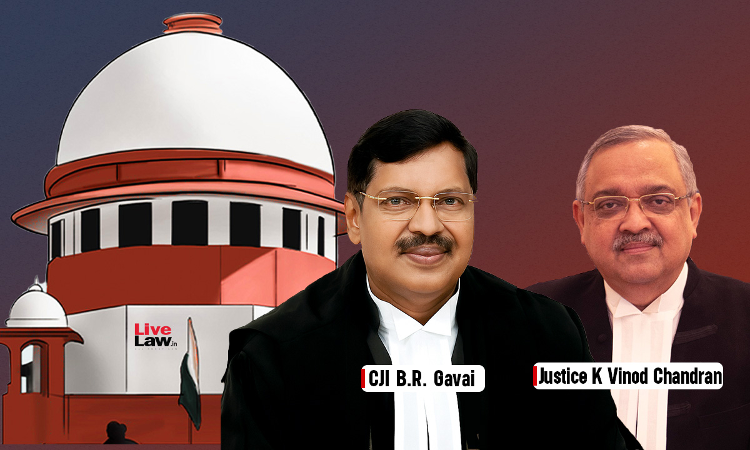- Home
- /
- Supreme court
- /
- Supreme Court Grants Relief To...
Supreme Court Grants Relief To Class IV Employees Of UP Judiciary Who Were Terminated 17 Years Ago
Amisha Shrivastava
28 Oct 2025 8:21 AM IST
The Supreme Court recently quashed the termination of 4 Class IV employees of the Ambedkar Nagar District Judgeship in Uttar Pradesh, holding that their removal in 2008 for being appointed beyond the notified vacancies was unjustified. A bench of Chief Justice BR Gavai and Justice K Vinod Chandran directed that those who have not yet reached the age of superannuation be reinstated in existing...
The Supreme Court recently quashed the termination of 4 Class IV employees of the Ambedkar Nagar District Judgeship in Uttar Pradesh, holding that their removal in 2008 for being appointed beyond the notified vacancies was unjustified.
A bench of Chief Justice BR Gavai and Justice K Vinod Chandran directed that those who have not yet reached the age of superannuation be reinstated in existing or supernumerary posts, while those who have crossed the age of 60 be paid minimum pension.
The appellants were appointed in 2001 to Class IV posts based on an advertisement issued on October 18, 2000 for twelve vacancies. The advertisement stated that the number of posts could “increase or decrease.” However, in 2008, their services were terminated on the ground that six appointments had been made in excess of the vacancies advertised.
The Allahabad High Court upheld the termination holding that the appointments were illegal as they exceeded the notified posts. Thus, they approached the Supreme Court.
Senior Advocate MC Dhingra for the appellants relied on the Supreme Court decision in Naseem Ahmad & Ors. v. State of Uttar Pradesh [(2011) 2 SCC 734], which interpreted Rule 12 of the Uttar Pradesh Subordinate Civil Courts Inferior Establishment Rules, 1955 governing recruitment to Class IV posts as allowing appointments from a waiting list to vacancies arising within a reasonable period, i.e, within the same or succeeding recruitment year.
Advocate Yashvardhan for the respondent District Judgeship of Ambedkar Nagar contended that as of the date of the advertisement, there were only twelve vacancies, and appointments made thereafter could not be justified.
The Supreme Court noted that the advertisement mentioned twelve vacancies with a rider that the number could increase or decrease. The Court reiterated that Rule 12 permitted maintaining a waiting list to meet vacancies arising within a reasonable period in the recruitment year or the year immediately after.
“The said recital in the advertisement would clearly indicate that the Appointing Authority intended that a wait list be maintained so as to fill up the vacancies arising in excess of those notified, which was permissible as per the rules,” the Court observed.
The Court noted that after the 2000 advertisement, fresh recruitment notices were issued only in 2008 and 2015, during which time 29 vacancies had arisen. This demonstrated the existence of vacancies during the period when the appellants were appointed, the Court opined.
The Court found the termination unjustified but noted that the appellants had been out of employment for 17 years. Two of them had crossed the age of 60, while the other two were nearing superannuation.
Taking into account that all had worked for eight years, the Court ordered that appellants who have not yet reached the age of superannuation be accommodated in existing Class IV vacancies in the Ambedkar Nagar judgeship or, if none exist, in supernumerary posts to be adjusted against future vacancies or cease upon their retirement.
Those who have crossed the age of 60 were directed to be paid minimum pension despite having served only eight years. The Court further ordered that the reinstated appellants would not get seniority but their earlier service would count for determining pensionable service, while the 17-year intervening period without employment would not count for any purpose.
The Court clarified that these directions were confined to the four appellants and issued in the peculiar facts of the case, not to be treated as a precedent.
Case no. – Special Leave Petition (C) No. 14980 of 2024
Case Title – Sanjay Kumar Mishra & Ors. v. District Judge, Ambedkar Nagar (UP)
Citation : 2025 LiveLaw (SC) 1031
Click Here To Read/Download Order



